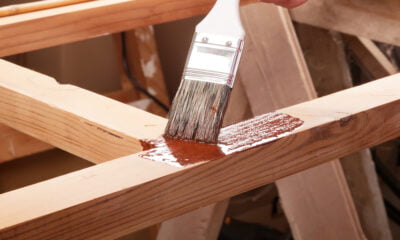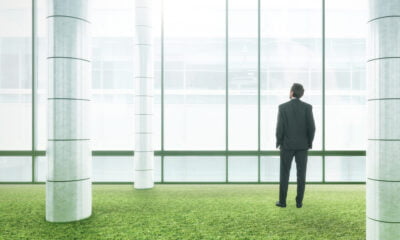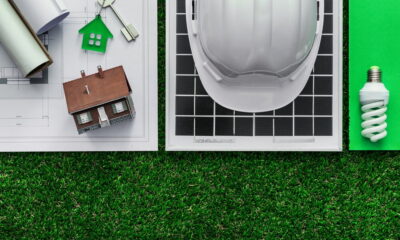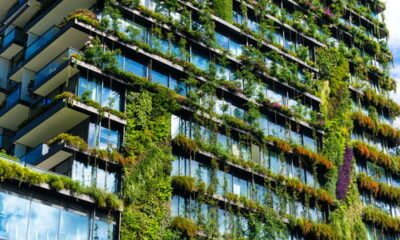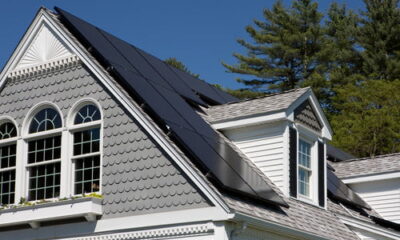

Environment
4 Eco-Friendly Building Materials You Never Thought to Use
A growing number of consumers are expressing a desire to go green. They are showing a greater interest in purchasing products from companies that have a proven track record for sustainability. Last year, Nielsen published a poll showing that 81% of consumers feel companies should take more steps to protect the environment.
Until recently, consumers felt that companies should shoulder the burden of making the world greener. However, they have recently started taking more steps themselves. One of the biggest steps that they are taking is building more sustainable homes.
Unfortunately, some homes are not as sustainable as they might seem at first glance. Consumers need to make sure that they choose the right materials if they want to live up to their commitment to be more sustainable.
The Sustainable Housing Revolution Drives Demand for Eco-friendly Building Materials
The tiny house revolution has greatly expanded the availability of eco-friendly building materials to look for when designing or purchasing a home with a green ethos. The change is quickly-growing. For instance, it is estimated that up to 1.5bn people globally rely on bamboo to build their homes, a number that is growing as more architect firms move towards sustainable design practices. If you are relocating or designing a property, sourcing local variations of key eco-friendly building materials can keep the carbon emissions down while leaving your family with a fresh slate to enjoy a sustainable living output for the future.
Bamboo Paneling
Bamboo has been a popular building material in many Asian countries for centuries. It is becoming more popular in other regions as well, primarily due to its reputation as an eco-friendly building material.
Bamboo is flexible yet durable, and can be used for indoor walls and flooring. In particular, Magnum recommends layering bamboo underneath mats or carpeting to provided added insulation. Bamboo is one of the fastest-growing tree species on Earth: In fact, the Guinness world record for fastest growing plant is a variation of genera bamboo that can grow up to 91 cm (35 in) per day. This high level of regeneration makes bamboo an ideal alternative to using pine or cedar in your home without sacrificing quality.
Sheep’s Wool
Sheep’s wool can be grown on a roughly annual basis, as most types of sheep are sheared once per year. Sheep’s wool is a natural insulator: this is why many high-end winter sweaters are made with wool, as it is one of the warmest materials for the body. For this reason, sheep’s wool is an exceptional, energy-efficient insulator for walls, ceilings and attics. It is an excellent alternative to the fiberglass: a synthetic insulator used in most homes that is linked to respiratory illness and skin inflammation.
What Is Timbercrete?
Not all synthetics are bad synthetics: timbercrete, a mixture of recycled concrete and sawdust, is ideal for replacing traditional concrete with a more eco friendly alternative. The material, which comes from Australia, provides up to six times the thermal insulation of conventional bricks. It is lighter than concrete, but easily shaped into blocks and bricks for building and fire-proof cladding.
Recycled Steel
Finally, recycled steel is one of several variants of recyclable building metals that can be used in homes and buildings. Unlike other metals, however, the infrastructure for recycling steel exists all over the world: in fact, over 500 million tons of steel are recycled annually worldwide. As you embark on the process of developing a home that is green literally from the ground up, it’s helpful to work with a team that can actualize your goals. You can try discussing options for using recycled steel or wood/plastic composite with your builders, who can work with you to find suppliers in your area focused on sustainability.
Of course, steel isn’t necessarily the best option for building a sustainable home, even if it is recycled. It is going to take a lot of energy to break it down and repurpose it for any building project. However, it is still going to be more durable and is another great option to consider.
The Sustainable Housing Revolution is a Step in the Right Direction
The demand for eco-friendly materials is only going to grow as climate change increases, but the difference made by turning your home green is noticeable on a small-scale, too. Sourcing high quality, sustainable building materials will lengthen the use value of your home, minimizing future repairs and renovations as you build with an eye towards the future of thinking green.


 Environment10 months ago
Environment10 months agoAre Polymer Banknotes: an Eco-Friendly Trend or a Groundswell?

 Environment11 months ago
Environment11 months agoEco-Friendly Home Improvements: Top 7 Upgrades for 2025

 Features9 months ago
Features9 months agoEco-Friendly Cryptocurrencies: Sustainable Investment Choices

 Features10 months ago
Features10 months agoEco-Friendly Crypto Traders Must Find the Right Exchange
